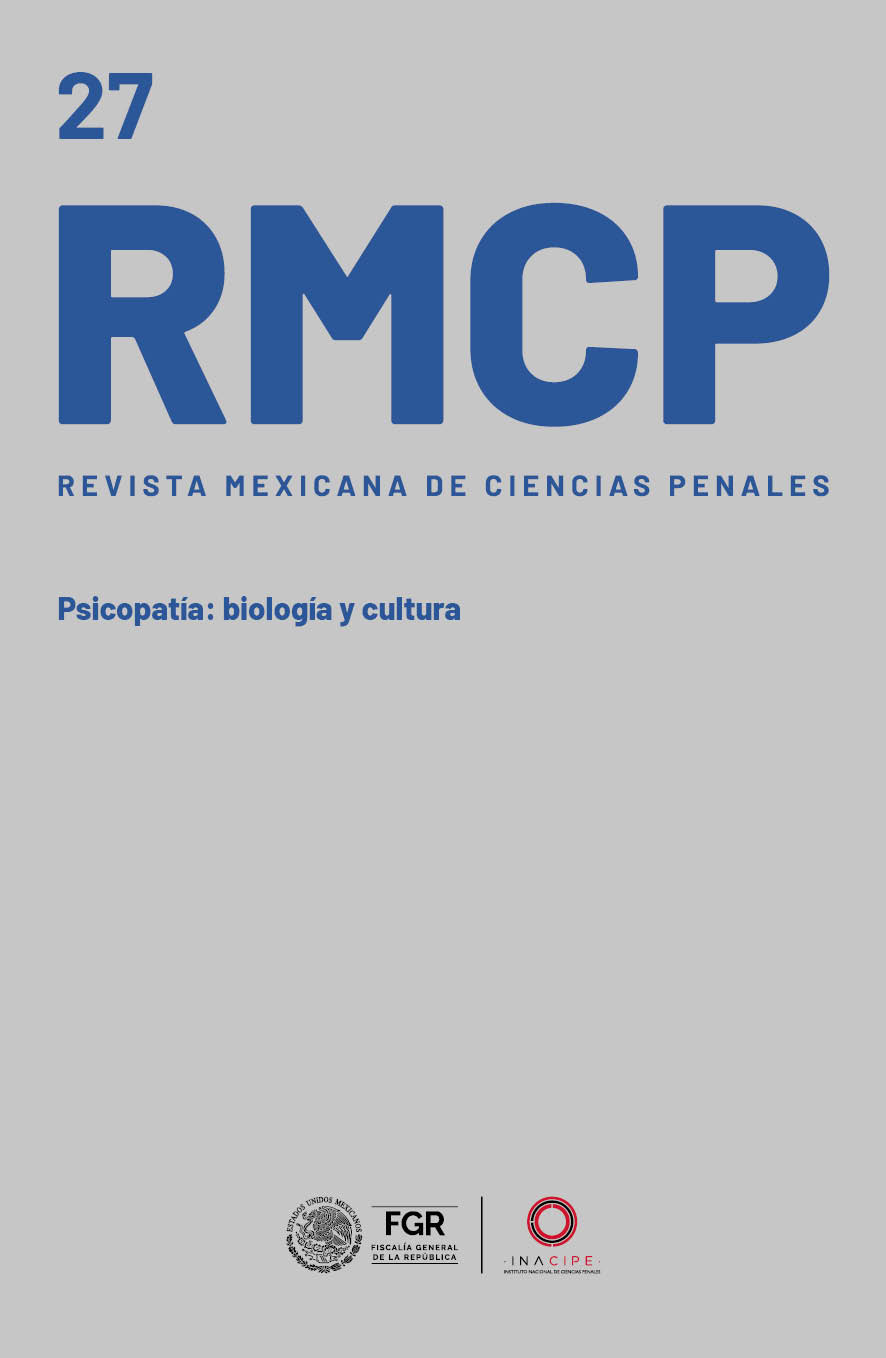Implicaciones culturales en la salud mental y la psicopatía
Contenido principal del artículo
Resumen
La salud mental es fundamental para el bienestar y está determinada por factores biológicos, sociales y culturales. En México, su atención se ve limitada por estigmatización y desigualdad. Este artículo resalta la importancia de analizar cómo la cultura influye en el diagnóstico y tratamiento de los trastornos mentales, particularmente en sociedades colectivistas, donde los valores grupales pueden enmascarar síntomas. En el caso de la psicopatía, aunque tiene bases neurobiológicas, su expresión varía: en culturas individualistas se manifiesta como manipulación, mientras que en las colectivistas se vincula a jerarquías y violencia. Comprender estas diferencias es crucial para generar políticas públicas culturalmente sensibles.
Descargas
Detalles del artículo

Esta obra está bajo una licencia internacional Creative Commons Atribución 4.0.
Deprecated: json_decode(): Passing null to parameter #1 ($json) of type string is deprecated in /var/www/html/plugins/generic/citations/CitationsPlugin.inc.php on line 49
Métricas
Citas
Cooke, David J. (1999). “Psychopathy Across Cultures”. En David J. Cooke, Adelle E. Forth y Robert D. Hare (eds.), Psychopathy: Theory, Research and Implications for Society (pp. 13–45). Países Bajos: Kluwer Academic. https://doi.org/10.1007/978-94-011-3965-6_2
Cooke, David J. (1998). “Cross-Cultural Aspects of Psychopathy”. En Theodore Millon, Erik Simonsen, Morten Birket-Smith y Roger D. Davis (eds.), Psychopathy: Antisocial, Criminal, and Violent Behavior (pp. 260–276). Nueva York: Guilford Press.
Díaz-Loving, Rolando, Christian E. Cruz-Torres, Carolina Armenta-Huarte y Norma E. Reyes-Ruiz (2018). “Variaciones en el individualismo-colectivismo horizontal y vertical en cuatro regiones de México”. International Journal of Social Psychology, 33(2), pp. 329–356. https://doi.org/10.1080/02134748.2018.1435217
Farrington, David P., Maria M. Ttofi y Alex R. Piquero (2010). “Risk, Promotive, and Protective Factors in Youth Offending: Results from the Cambridge Study in Delinquent Development”. Journal of Criminal Justice, 45, pp. 63-70. https://doi.org/10.1016/j.jcrimjus.2016.02.014
Hart, Stephen D. y Robert D. Hare (1996). “Psychopathy and Antisocial Personality Disorder”. Current Opinion in Psychiatry, 9(2), pp. 129–132. https://doi.org/10.1097/00001504-199603000-00007
Hofstede, Geert (2011). “Dimensionalizing Cultures: The Hofstede Model in Context”. Online Readings in Psychology and Culture, 2(1). https://doi.org/10.9707/2307-0919.1014
Kirmayer, Laurence, Lavanya Narasiah, Marie Munoz, Meb Rashid, Andrew G. Ryder, Jaswant Guzder, Ghayda Hassan, Cécile Rousseau y Kevin Pottie (2011, septiembre). “Common Mental Health Problems in Immigrants and Refugees: General Approach in Primary Care”. Canadian Medical Association Journal, 183(12), pp. E959–E967. https://doi.org/10.1503/cmaj.090292
Kleinman, Arthur (1996). Writing at the Margin: Discourse Between Anthropology and Medicine. California: University of California Press.
Luján Martínez, Angélica, Jeanette Aurora Álvarez López, Marta Luisa Pérez López, y Feggy Ostrosky (2023, marzo). “Aspectos distintivos de los rasgos de psicopatía primaria y secundaria: revisión actualizada”. Edupsykhé. Revista de Psicología y Educación, 20(1), pp. 5-21. https://doi.org/10.57087/edupsykhe.v20i1.4531
Medina Mora, Ma. Elena, Ricardo Orozco, Claudia Rafful, Martha Cordero, Jessica Bishai, Alize Ferrari, Damian Santomauro, Corina Benjet, Guilherme Borges y Ana M. Mantilla Herrera (2023). “Los trastornos mentales en México 1990-2021. Resultados del estudio Global Burden of Disease 2021”. Gaceta Médica de México, 159, pp. 527-538. https://doi.org/10.24875/GMM.23000376
Murphy, Jane M. (1976). “Psychiatric Labeling in Cross-Cultural Perspective”. Science, 191, pp. 1019-1028.
OMS: Organización Mundial de la Salud (2022, 8 de junio). “Trastornos mentales”. OMS. https://www.who.int/es/news-room/fact-sheets/detail/mental-disorders
OMS (2013). Plan de acción sobre salud mental 2013-2020. Ginebra: OMS.
OPS: Organización Panamericana de la Salud (2023). Una nueva agenda para la salud mental en las Américas. Informe de la Comisión de Alto Nivel sobre Salud Mental y covid-19 de la Organización Panamericana de la Salud. Washington: OPS. https://iris.paho.org/bitstream/handle/10665.2/57504/9789275327265_spa.pdf?sequence=2&isAllowed=y
Ostrosky, Feggy (2011). Mentes Asesinas. La violencia en tu cerebro (2.a ed.). Naucalpan: Quinto Sol.
Ostrosky, Feggy (2023). La violencia. Qué la genera y qué la previene. México: Manual Moderno.
Oyserman, Daphna, Heather M. Coon y Markus Kemmelmeier (2002). “Rethinking Individualism and Collectivism: Evaluation of Theoretical Assumptions and Meta-Analyses”. Psychological Bulletin, 128(1), 3–72. https://doi.org/10.1037/0033-2909.128.1.3
Pérez Alejo, Julio César y Víctor Hugo Ortiz Montalvo (2022). “Salud mental en México, un desafío de salud pública”. Milenaria, Ciencia y Arte, 11(19), pp. 6-8. https://www.milenaria.umich.mx/ojs/index.php/milenaria/article/view/242
Secretaría de Salud (2023). Plan sectorial de salud mental y adicciones. México: Comisión Nacional de Salud Mental y Adicciones, Instituto de Seguridad y Servicios Sociales de los Trabajadores del Estado, Instituto Mexicano del Seguro Social.
Shou, Yiyun, Shi En Lay, Heshani Samantha de Silva, Nakiya Xyrakis y Martin Sellbom (2021). “Sociocultural Influences on Psychopathy Traits: A Cross-National Investigation”. Journal of Personality Disorders, 35(2), pp. 194-216. https://doi.org/10.1521/pedi_2019_33_428

